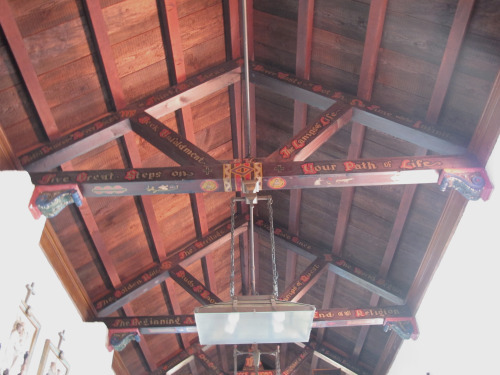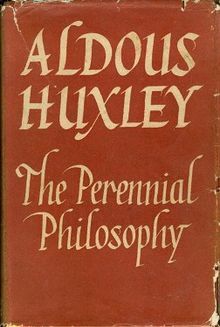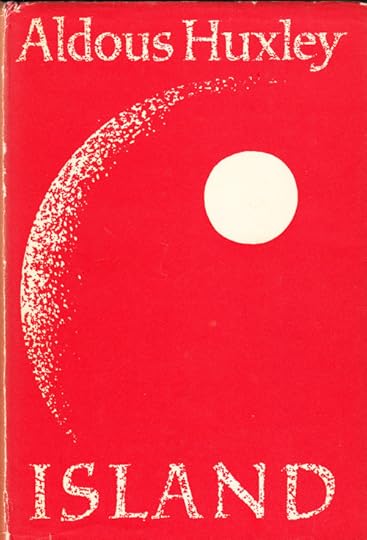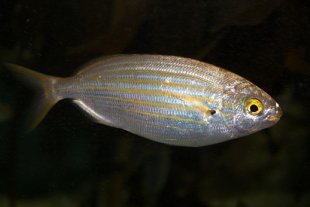Allene Symons's Blog, page 4
November 30, 2016
Dr. Strange opens The Doors
of Perception Wait for it, I...

Dr. Strange opens The Doors
of Perception
Wait for it, I muttered to
myself.
Here it comes: the cameo of
Stan Lee reading Aldous Huxley’s The
Doors of Perception while Manhattan implodes like a 360-collapse of crystal cards.
Comics! The Doors of Perception!
Mysticism and madness! I walked into the multiplex expecting to enjoy two out
of three and walked out with a new appreciation of the power of green screen
and comics to carry a message. I loved it. Safe to say Dr. Strange as a film is
mainly intended for boys of all ages. Still, when I was a young girl I loved
Mad magazine, back then in its original comic book format.
Stan Lee-co created the
character Dr. Strange, which first appeared in a comic book in July 1963. The
Doors of Perception was published in 1954, so there was a gap of about a
decade. During that time, of course, Huxley’s account of his personal
experience upon ingesting psychedelics (in his case mescaline) influenced other
writers and researchers. Interest in mind-altering adventures swelled until by
the mid-‘60s it had swept across the nation.
Flash forward to this month,
when the box-office effect of Dr. Strange was quickly picked up by the
Institute of Noetic Science. I touch on the work of IONS in my book, Aldous Huxley’s Hands: His
Quest for Perception and the Origin and Return of Psychedelic Science.
Dr. Strange, the film, has
kicked up the glittery dust of an ancient trope (fallen character becomes a spiritual
seeker and adept, mastering supernormal powers). This old idea is also the
topic of current scientific research conducted by IONS, which points out in its
November 21 blog (I quote from it here): 1) Dr. Strange learns that ancient
spiritual disciplines can lead to extraordinary feats—and there is scientific evidence
that such engagement can “reveal unusual abilities.”; 2) Dr Strange experience “mind-matter
interactions” and “learns to manipulate the experience of reality.”; 3) after a
debilitating accident, Dr. Strange searches for a healer who “teaches him how
he could heal himself with the power of his mind.”; 4) Dr. Strange, an arrogant
yet shattered man, experiences transcendence, or direct knowledge of a reality
greater than himself, and dedicates himself to helping the world.
Art source: IMDb and Disney/Marvel (see Marvel.com).
Check out the IONS blog
called “4 Science Fiction Topics from Dr. Strange that may be Less ‘Fictional’
Than You Thought” http://noetic.org/communictions-team/4-science-fiction-topics
IONS calls these four “extraordinary human capacities.” Aldous
would call them aspects of “Human Potentialities.”
October 31, 2016
On this All Hallows Eve, I honor the crow and its cousin...

On this All Hallows Eve, I honor the crow and its cousin the
raven – a pair of smart, carrion eating
creatures long acknowledged as symbols of ill-omen in legend and literature.
Edgar Allan Poe celebrated the cagey and creepy black-winged
one in The Raven ( “Nevermore….”). So did Aldous Huxley, who wrote a semi-light-hearted
book for children called The Crows of
Pearblossom, dedicated to the Huxley’s niece, Olivia. As the tale goes, the
Pearblossom crows are a cozily mated pair who, through tenacity and cooperation
defend their nest against an egg-devouring snake, and in the end literally hang
him up to dry. The book was written during
World War II, when the Huxleys lived on a ranch they had purchased in the
sparsely populated Mojave Desert. Their niece and her family lived a stone’s
throw away down a dusty road in this stark but stunning landscape, where ravens
are more frequently seen than crows (both are of the family corvidae).
By today’s standards, the simple narrative of this picture
book may seem far from feminist (what with the retro wifey attitude of Mrs.
Crow and her spouse), but even in this short tale Huxley applied the
storytelling rules of conflict, suspense, and resolution.
Aldous was a British ex-pat and a pacifist, and when he and
his wife Maria retreated from Los Angeles to the desert from 1941 to about 1945
this move was a kind of self-imposed exile, keeping him away from the onslaught
of war news. When writing The Crows, I
wonder if he thought about the ravens of the Tower of London, where countless
beheadings took place. Outside the walls, ravens no doubt cawed and flapped
their wings, their hoarse cries maybe reaching the ears of the doomed like an
omen.
Legend has it that Britain’s future – the future of country
and Kingdom – relies on their continuing residence, even though these days the
legend is fulfilled by six captive ravens.
Because this is Halloween and a time for ghoulish thoughts,
it occurs to me that if/when a plague or other apocalypse strikes and
civilization breaks down, chances are we will be high on the crow-raven menu.
September 30, 2016
A Mirror of The Perennial PhilosophyThis month I had a chance...



A Mirror of The Perennial Philosophy
This month I had a chance to
reflect on the mystical threads woven into Huxley’s work, even before he
experimented with the psycho-spiritual side of psychedelics and wrote about it
in The Doors of Perception.
Huxley’s early reputation came from
novels skewering the attitudes of the social class with which he was
so familiar. He followed up several books later with his dystopian classic Brave New World.
After emigrating to the U.S. in 1937,
Huxley ended up in southern California. Initially, he scripted adaptations
for a few classic novels such as Jane
Eyre, and he wrote a satirical Hollywood novel with a twist: This was his
After Many a Summer Dies the Swan, in
which the main protagonist was not the film mogul Jo Stoyte, who fears his
impending death, but Mr. Propter, a professor who shuns the grasping of the glittering
world and finds meaning by looking within. By then, Huxley’s life and his writing
were both taking an inward turn.
Around this same time he wrote the first
of several nonfiction books, including his exploration of the mystical thread
in the world’s religions. This was his 1945 work called The Perennial Philosophy.
Mentioning this book brings me (at long
last, you say…) to why I have been reflecting lately on the mystical theme in
Huxley’s work. It turns out that during the time he was writing The Perennial Philosophy he was spending
a great deal of time at Trabuco College. This place, despite its name, was a
kind of monastery atop an oak-dotted canyon in southern California’s Orange
County.
During the war years, Huxley’s friend
the author and lecturer (and former BBC science commentator) Gerald Heard
purchased land to build a retreat for meditation and study of world religions,
experimentation with ESP and hypnosis, and practice of psycho-spiritual
disciplines intended to expand the powers of the mind. Huxley even had a hand in the
planning of Trabuco when he helped his friend Gerald formulate the mission statement
and lay out the floor plan for the brick-and-beams structure nestled in hilltop
acreage.
It happened to be a short drive away
from the nearby coastal city of Laguna Beach where in hot weather the
retreat-residents of Trabuco College, occasionally including Huxley, liked to
escape for the sake of ocean breezes.
The connection, for me, was a research
project lately involving a curiously tiny church I attended as a child in
Laguna Beach called St. Francis by the Sea Cathedral. I wrote about it in a
chapter of my book Aldous Huxley’s Hands.
Lately I have resumed looking into its early history and perusing some of the supporting documents.
Until recently, this church held the title
in the Guinness Book of World Records as the “World’s Smallest Cathedral.”
Moreover, though nominally American Catholic since its founding in 1934, in its
original conception the founder of St. Francis by the Sea drew on world
religions along with other Theosophical Society principles, as can be seen in the
decorations in its interior.
The small cathedral is a near
contemporary of the former monastery/college in Trabuco Canyon, where Huxley
spent long hours during the war years working on several of his books.
The monastery is now owned by the Vedanta
Society. A few miles away, inside the church in Laguna Beach, the arcane symbols and original
messages—including “Seek Unfoldment” (which could apply to the later human
potential movement) have been preserved intact. They can be viewed today on
the seven original, hand-painted rafters where many of the phrases and symbols seem like a mirror of Huxley’s The
Perennial Philosophy.
August 31, 2016
Seesaw in the news: neuroscience and parapsychology
Typically, people give a thumbs up to
neuroscience (hooray for hard science and its measurable data!) and thumbs down
to parapsychology and related inquiries, dismissing uncanny incidents because
they cannot be precisely repeated as the scientific method requires.
Not so fast, it turns out. The June issue of Mensa
Bulletin: The Magazine of American Mensa ran as its cover story “ESP and the
Paranormal Uncovered: Explanations for the Unexplainable Find Credibility in
Mainstream Science,” an account of recent studies in the area
of parapsychology.
Switching back to the hard-science side, media
attention of late has zoned in on fMRI-based studies, generating headlines
such as the brain in love, the criminally inclined brain, and the brain under
the influence of LSD (the latter as reported in a previous Huxley’s Hands blog).
Enter the Aldous connection: An August 28 New York Times article called “Do You Believe in God, or is That A Softwear Glitch” might have prompted Aldous to say (uttering one of
his favorite phrases of appreciation), “How absolutely incredible!”
Huxley’s pet interest since he first moved
to California until his death a quarter century later was exploration of consciousness
and perception. Best remembered for writing about his dips into psychedelics,
Huxley also had a longstanding interest in parapsychology and what might be
called the paranormal, including questions of life after death. He saw
unexplained areas of the mind as barely-tapped human potential, whether opened
by psychedelics or applied in spiritual healing or expressed in clairvoyance or
plumbed in a hypnotic state.
In Huxley’s day, what went on in the brain
under the influence of psychedelics was a matter of speculation. Huxley had his own theory, which was
that ordinarily our brain acts like a “reducing valve” to filter out the
otherwise overwhelming input and enable us to focus on the essentials we need
for daily living. Psychedelics, he believed, opens our consciousness to take
everything in and experience a state closed off as if behind a door that, if
opened, we recognized directly as what he called “mind at large.” But can we
measure or see this objectively, from the outside?
I’ll digress for a bit of background: The year
1991 saw the introduction of the concept of measuring brain activation by
tracking blood-oxygen levels and changes in cerebral blood volume using functional
magnetic resonance imaging, or fMRI. What fMRI registers is how areas “light
up” in response to stimuli. But how fMRI is interpreted
is being called into question.
The scans produce images, and software programs infer or interpret
activity based on tens of thousands of clusters of tiny pixels (known as
voxels). And therein lies the rub. A study published last month in the
Proceedings of the National Academy of Sciences shows a fundamental flaw in
neuroscience research.
Software is subject to errors. In her NYT
article Kate Murphy cites an
experiment by a graduate student whose fMRI scan on a dead salmon registered
neural activity when “shown” photographs of humans. WTF?
Is there a take-away from these two recent articles? Maybe it is don’t
slavishly trust what can be measured, and simply because phenomena is difficult
to measure, don’t give up.
July 31, 2016
Island
After a five-day vacation near a lapping shore, islands are on my mind this last day of July.
One long ago summer in June of 1961 – merely a month after his house burned to the ground in a canyon brush fire – Huxley finally completed the manuscript of his utopian novel Island. The manuscript was one of very few items he had managed to save in those last desperate minutes as flames surged up the canyon and he and Laura fled from their home
Huxley had long planned to write a utopian novel, as he told Dr. Humphry Osmond in a letter penned many years earlier. Huxley understood that utopias were fragile constructs. He had written about the failed utopian community of Llano del Rio, and he and first wife Maria had lived in the Mojave desert adjacent to the former colony. In his time, the ruins were still standing and some original walls survive even today.
Huxley knew that a perfect society cannot be sustained in perpetuity when those who comprise any group suffer from human flaws, guaranteeing eventual degradation from within or without. An island with its insularity (not unlike a remote desert locale) might encourage the bud of an ideal to flourish for a while, but not forever.
So after deciding on the fictional setting of an imaginary island and naming it Pala, Huxley set about portraying an advanced culture with an enlightened approach to education, a guilt-free attitude toward sexuality, and a cradle-to-grave practice of spiritual development that included the use of, and respect for, the mind-expanding properties of a psychedelic mushroom Huxley dubbed moksha medicine.
Pala’s highly evolved culture required separation from the taint of its neighbors, but leaders of a neighboring country cast a predatory eye on Pala’s as-yet unexploited mineral resources. Simultaneously, protective resolve was collapsing from within. Pala’s founders and a successive generation prevailed until they spawned a third generation, thrill-seeking heir who was drawn to the glittery temptations of another shore.
I write this on a midsummer’s day, when two themes in Huxley’s Island bring to mind current and recurrent news headlines. The 17th century poet John Donne wrote “no man is an island.” In this sense, no nation is an island. Change arrives, for better or for worse, from without or within.
June 30, 2016
Ditty for a Psychedelic Menagerie
A Nepalese
bee makes psychoactive honey
Nibbling a certain fish makes you high
A type
of toad induces a psychedelic experience,
Assuming you process its poison before
giving it a try
Bad
verse aside, below are a few references for the sake of culinary explorers who envision
a dinner party of psychedelic cuisine. Maybe a starter of toad, move on from
the amphibian course to seafood, then end with a sweet-tooth finish. For wine
pairings you are on your own.
Actually,
the wine pairing idea is iffy. Hell, the whole menu would be one interaction
nightmare. Which reminds me that Huxley’s twin psychedelic essays were, after
all, The Doors of Perception followed by Heaven and Hell. The above gorge-a-thon
would be less likely to cause a hangover than to trigger a no-return psychotic
episode.
Aldous
Huxley liked to write ditties. The most famous was his “To make this trivial
world sublime, Take half a gramme of phanerothyme,” a losing counterpunch to
Humphry Osmond’s “To plumb the depths or soar angelic, Take a pinch of
psychedelic.”
In
the early 1950s, the two friends experimented with and talked about various psychoactive
substances, discussing them mainly through letters but sometimes in person. One
natural substance they both tried, as seen in their letters, was a type of
morning glory seed they procured from Cuba. Then there was the toad rumor,
though there is no evidence that they actually progressed from speculation to
gustation.
Humphry
Osmond, in a letter to Huxley in February of 1956, cited cohaba – a
hallucinogen made primarily of ground tree seeds – and said the mixture is
alleged to contain bufotenin, found in certain plants and in Bufo toad venom.
Osmond goes on to connect this to Shakespeare’s three witches in Macbeth:
“that
eye of newt and toe of frog business might have had some thing in it, for
bufotenin was originally isolated from frog’s skin, or rather toad and was
taken as a snuff in Haiti.”
Huxley
often dipped into Shakespeare and classic references. Maybe if he had written
this blog, though, he might have couched it not as a ditty but as a spin on Aesop’s
Fables.
Info on the honey:
www.natureworldnews.com/articles/23167/20160531/psychedelic-honey-nepal-proved-healing.htm .
On the fish:
http://www.alternet.org/drugs/meet-fish-can-give-you-lsd-hallucinations
Photo Credit:
Wikimedia/Creative Common
On the toad:
May 13, 2016
It’s Unofficial: Mescaline Awareness Month!
I propose a shiny new commemorative month – and a boldly
shimmering holiday: May 6, marking the day in 1953 when Aldous Huxley sallied forth on his first
mescaline adventure under the supervision of Dr. Humphry Osmond. The creative result
of this single day of astonishment was Huxley’s influential book The Doors of Perception.
Ok, I doubt if my proposal will make the official list
of commemorative months much less calendar holidays, but bear with me while I
make my case:
This stab at recognition is aimed at the aficionado of
all things history-of-psychedelics and for the newbies, too. Thanks to new
research and media reports, a new generation is learning about the bright and
dark experimentation in the United States that began primarily with mescaline
and led, after being banned for decades, to a sanctioned psychedelics comeback.
(Today, such legal research for therapeutic applications largely involves
psilocybin, to a limited extent LSD, and a chemical cousin called MDMA.)
Some people ask, What is mescaline, anyway? When told it
is a derivative from the peyote cactus or peyote button, that usually gets a
nod. A second question is, Why do we care, if no one
uses it any more? Well, some do. Reportedly, Silicon Valley tech types claim
that microdosing with mescaline gives them a creative edge, though of course
this has not been proven (and as with any psychoactive substance there is risk involved).
In short, I think the idea of May 6 as Mescaline Day has
legs, naturally because of its halo association with Aldous. I’d call this a grass-roots
movement with one root, me, the author of Aldous
Huxley’s Hands: His Quest for Perception and the Origin and Return of
Psychedelic Science.
Pushing the point, I’ll add a precedent: Psychedelic
fans already celebrate April 19 as Bicycle Day, marking the incident in 1943
when Swiss chemist Albert Hofmann –who discovered and was the first to
intentionally try lysergic acid diethylamide – ingested what he thought would
be a threshold dose of LSD. Initially thinking he had freaking lost his mind,
Hofmann took off on his bicycle in a journey that began in terror but, once
home, turned into amazement. The incident inspired Bicycle Day, unofficially designated
for the first time in 1985.
I haven’t checked the application process but
suspect that Mescaline Awareness Month won’t make the cut so doubt if I’ll
bother. (Even the all-inclusive Wikipedia questions iffy entries like National
Lawn Care Month by flagging them in red and adding the qualifier “citation needed”.)
But May 6? Yes!
Next year on a warm-up for Bicycle Day, April 19, I’ll spin out some online hoopla
for the following month when Mescaline Day, May 6, rolls around. When I do, maybe
some celebrants will join me.






